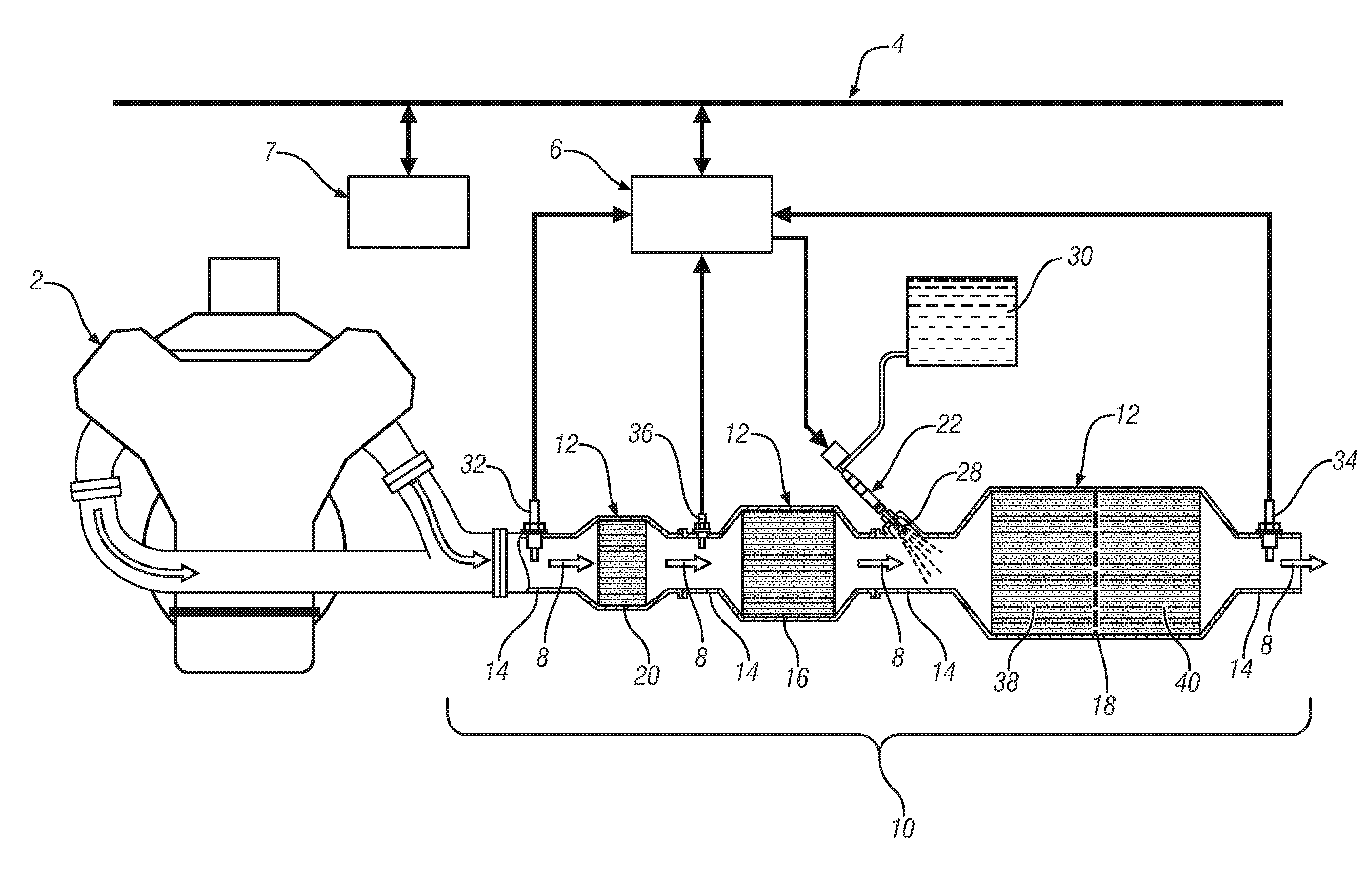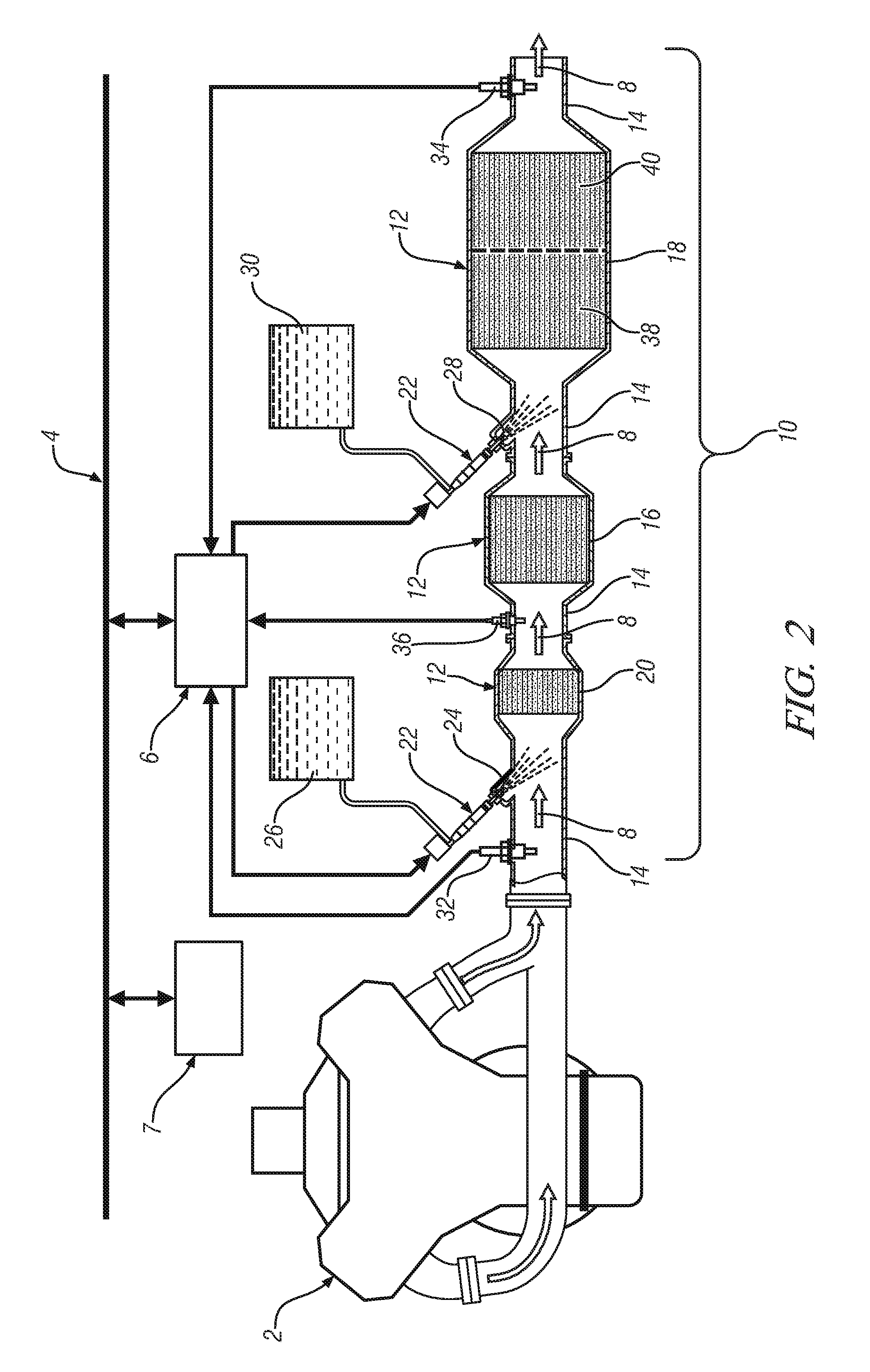Exhaust gas treatment system including a lean NOX trap and two-way catalyst and method of using the same
- Summary
- Abstract
- Description
- Claims
- Application Information
AI Technical Summary
Benefits of technology
Problems solved by technology
Method used
Image
Examples
Embodiment Construction
[0018]In accordance with exemplary embodiments of the present invention, improved exhaust gas treatment systems and methods for treatment of exhaust gas emissions from diesel engines are provided. The present invention provides the potential for reduced and controlled exhaust emissions, including emissions of NOX, CO, HC and diesel particulates (PM), while improving overall packaging for the exhaust gas treatment system. The present invention also provides the potential for enhanced emission control strategies and methods, including strategies and methods, for example, that minimize the consumption of hydrocarbon (e.g., fuel) or urea needed to achieve reduced exhaust emissions, or that minimize the need for regeneration to remove accumulated sulfur compounds, and thereby extend the operating life of the exhaust system components. This is achieved through the use of advantageous combinations of exhaust system components or devices that are particularly suited for synergistic interact...
PUM
| Property | Measurement | Unit |
|---|---|---|
| Flow rate | aaaaa | aaaaa |
| Volume ratio | aaaaa | aaaaa |
Abstract
Description
Claims
Application Information
 Login to View More
Login to View More - R&D
- Intellectual Property
- Life Sciences
- Materials
- Tech Scout
- Unparalleled Data Quality
- Higher Quality Content
- 60% Fewer Hallucinations
Browse by: Latest US Patents, China's latest patents, Technical Efficacy Thesaurus, Application Domain, Technology Topic, Popular Technical Reports.
© 2025 PatSnap. All rights reserved.Legal|Privacy policy|Modern Slavery Act Transparency Statement|Sitemap|About US| Contact US: help@patsnap.com



